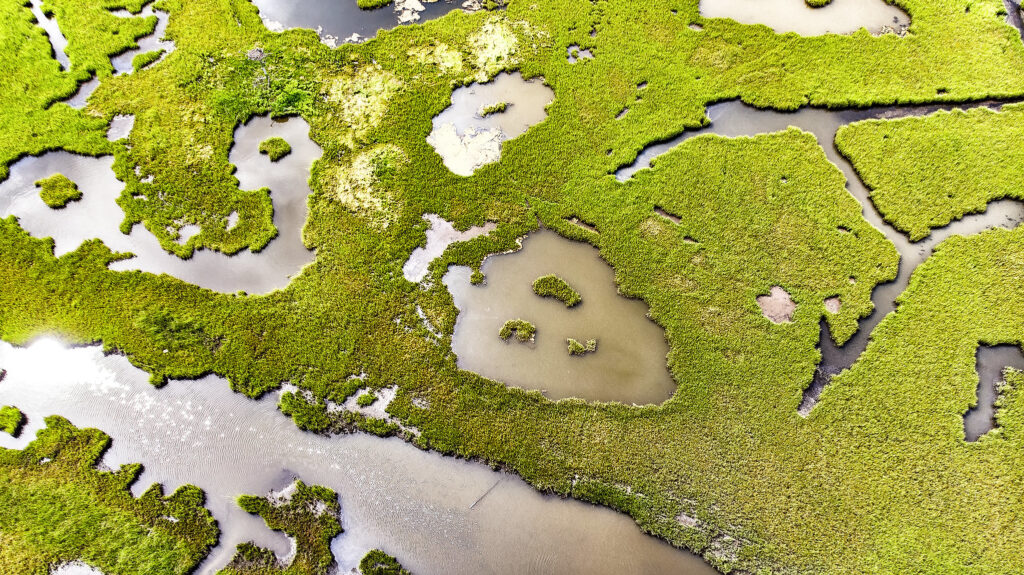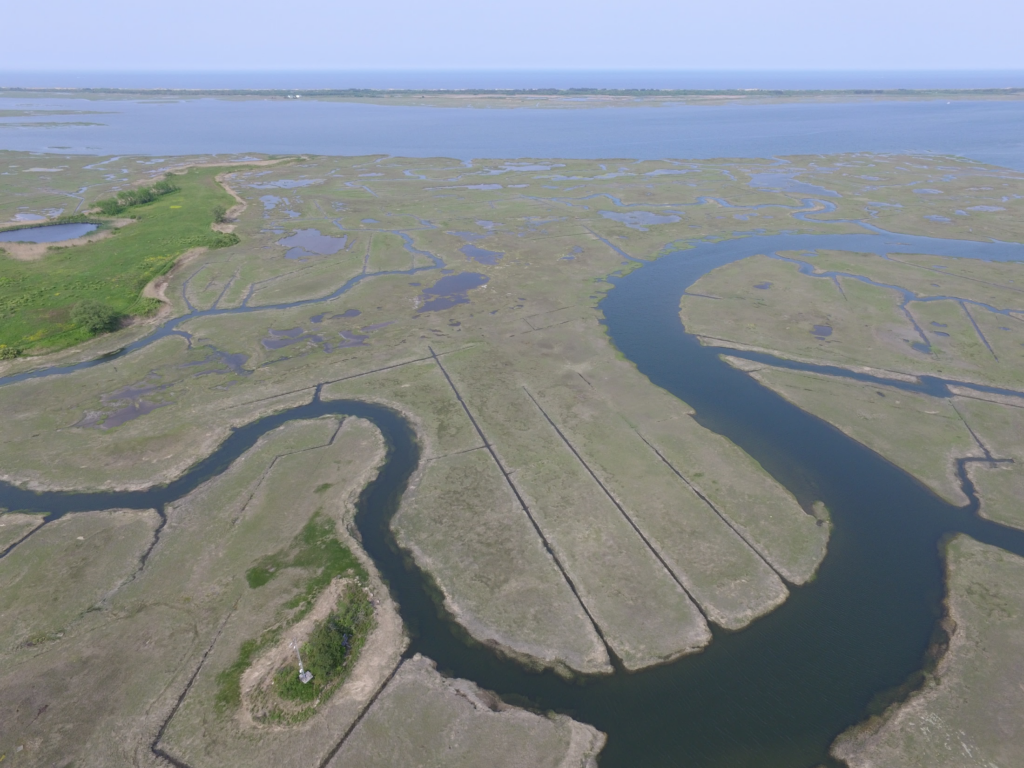Salt marshes on the U.S. East Coast have accumulated soil more quickly over the past century, and some appear to be keeping pace with rising waters. But that won’t last forever.
28 March 2023

Some salt marshes have kept pace with sea level rise over the past century while others have foundered, according to new research in Earth’s Future. The study is the first to measure and compare wetland growth rates across much of the East Coast. Credit: James Loesch/flickr
AGU press contact:
Rebecca Dzombak, +1 (202) 777-7492, [email protected] (UTC-4 hours)
Contact information for the researchers:
Nathaniel Weston, Villanova University, [email protected] (UTC-4 hours)
WASHINGTON — The world’s salty, tidal marshes are hotspots of carbon storage and productivity, building up sediments and plant material to stay above sea level. However, as sea level rises at an increasing rate, scientists debate whether it’s possible for wetlands to win the race. New research reveals how salt marshes along the U.S. East Coast have responded to accelerating sea level rise by building elevation more quickly to keep pace with the sea over the last century.
The study was published in Earth’s Future, which publishes interdisciplinary research on the past, present and future of our planet and its inhabitants.
Two main factors affect how quickly a salt marsh accumulates soil: how much sediment is deposited in the wetland during tidal floods, and how much organic matter from the marsh’s plants escapes decomposition. Humans can choke sediment supply to marshes by building dams or increase supply by causing erosion upstream, often through clearing land for agriculture. Cooler temperatures let more organic matter build up.
If sea level is rising slowly, sediment is plentiful, and vegetation is booming, a coastal wetland can keep pace with rising waters. But if sea level rises too quickly, that balance is lost.
“These feedback cycles allow a marsh to keep up and increase its rate of soil accretion up until a point where it just can’t,” said Nathaniel Weston, an ecosystems ecologist at Villanova University who led the study. “After that, it falls off the other end and can no longer exist as a marsh. And it’s very likely that will happen in many places.”
The new study is the first to assess the race on a large scale, comparing soil accretion rates using soil core from nine salt marshes from Maine to Georgia. The dark, peaty columns record over 100 years of the marshes’ histories, and researchers dated the soil to calculate how quickly the wetlands grew over time and how that rate changed.

The salt marshes of Massachusetts’ Plum Island seem to be keeping up with sea level rise, but other sites along the East Coast haven’t been so lucky, the new study reveals for the first time. Credit: Nathaniel Weston
Although soil accretion sped up in all nine marshes, only six marshes built soil at roughly the same rate as sea level rise over the past century. Three marshes in North Carolina, South Carolina and Virginia could not keep up with local sea level rise due to rapid sea level rise, low sediment supplies from damming, and warmer temperatures.
“This is the first study to document what’s happening on this scale, across pretty much the entire East Coast,” said Weston. “We were definitely excited to see fairly consistent results across our sites, where the marshes were increasing their rate of soil accretion.”
Many coastal salt marshes around the world may be accelerating their growth, too, at least for the moment, Weston said.
Molly Keogh, a coastal geologist at the University of Oregon who was not involved in the study, echoed that sentiment. “There’s got to be a tipping point where wetlands simply can’t keep up with these increasingly fast rates of sea level rise,” she said. “There are places, like the Mississippi Delta, that have already reached these tipping points. At this point, the drowning of [coastal] wetlands is essentially inevitable.” Slowing sea level rise is key, but doing so is an incredibly difficult and slow task that won’t come quickly enough to save salt marshes, she said.
To slow the process of inundation, communities could install “living shorelines” of vegetation to retain sediment, Weston said. An expensive but temporary solution is to spray a slurry of mud and water over the marsh, which adds a few millimeters of sediment and can offset sea level rise a few years.
###
AGU (www.agu.org) is a global community supporting more than half a million advocates and professionals in Earth and space sciences. Through broad and inclusive partnerships, AGU aims to advance discovery and solution science that accelerate knowledge and create solutions that are ethical, unbiased and respectful of communities and their values. Our programs include serving as a scholarly publisher, convening virtual and in-person events and providing career support. We live our values in everything we do, such as our net zero energy renovated building in Washington, D.C. and our Ethics and Equity Center, which fosters a diverse and inclusive geoscience community to ensure responsible conduct.
Notes for journalists:
This study is published in Earth’s Future, an open-access journal. Download a pdf of the study for free here.
Paper title:
“Recent acceleration of wetland accretion and carbon accumulation along the U.S. East Coast”
Authors:
- Nathaniel Weston (corresponding author), Elise Rodriguez, Brian Donnelly, Kristen Jezycki, Sandra Demberger, Department of Geography and the Environment, Villanova University, Villanova, PA, USA
- Elena Solohin, Christopher Craft, O’Neill School of Public and Environmental Affairs, Indiana University, Bloomington, IN, USA
- Lori Sutter, Department of Biology and Marine Biology, University of North Carolina Wilmington, Wilmington, NC, USA
- James Morris, Department of Biological Sciences, University of South Carolina, Columbia, SC, USA
- Scott Neubauer, Department of Biology, Virginia Commonwealth University, Richmond, VA, USA